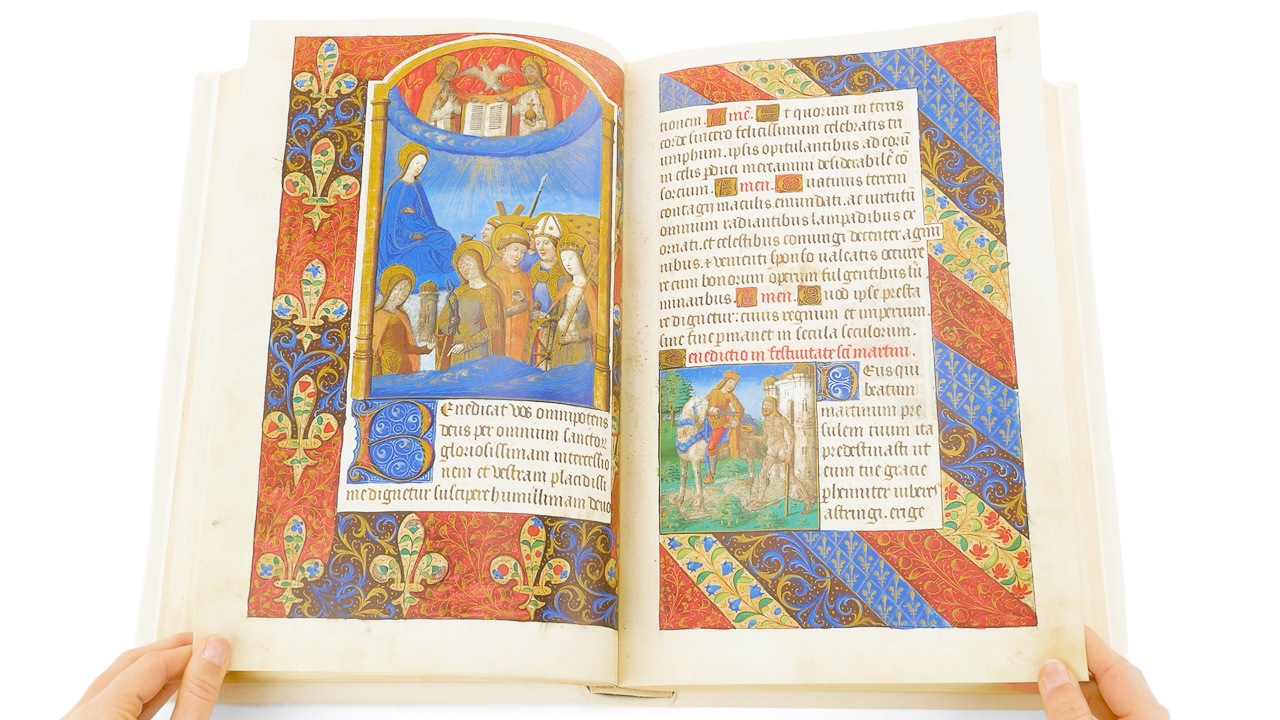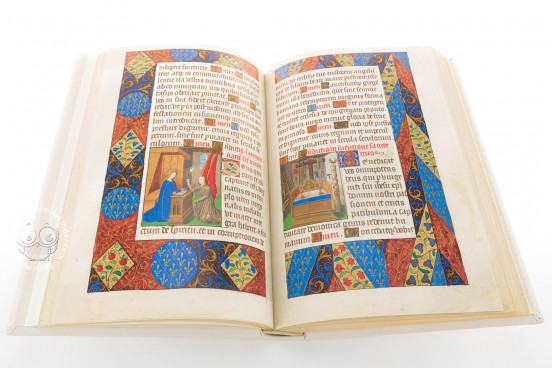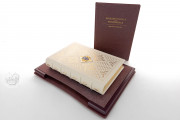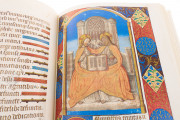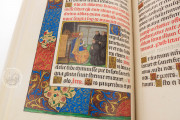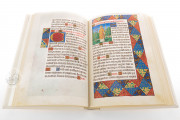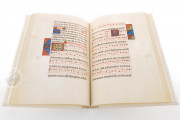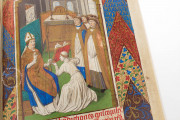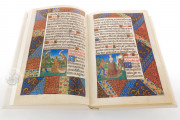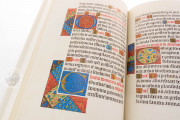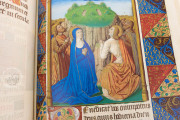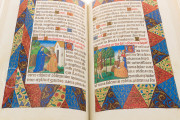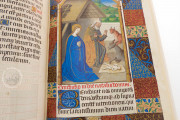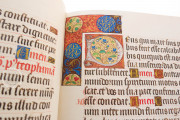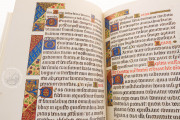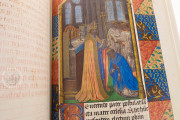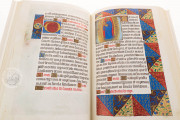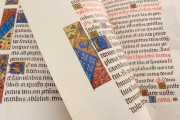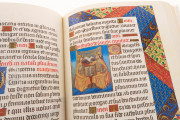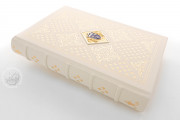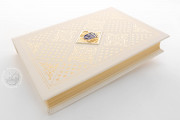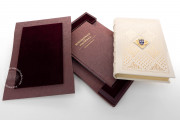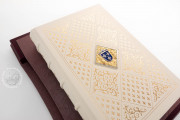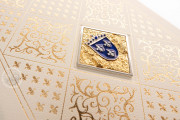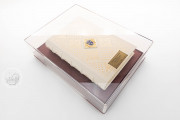Created in Paris in the last quarter of the fifteenth century, the Vatican Pontifical and Benedictional is a sumptuous manuscript of texts and instructions for blessings and sacraments to be performed by a Christian bishop. Its thirty-five miniatures with borders were painted by the Master of Jacques de Besançon and his workshop. The ten largest paintings occupy three-quarters of a page and have full borders of rich color and gold.
The manuscript opens with the texts of blessings said at Mass by a bishop on major feast days (fols. 1r-60r), the contents of the liturgical book known as a benedictional. The second, more extended portion is a pontifical, commonly a book unto itself, which describes the ritual actions and provides the texts for sacraments performed by a bishop (fols. 60v-167v).
A Novel Appearance
Christian liturgical books were often illuminated in the early and high Middle Ages. By the fifteenth century, however, they rarely attracted sumptuous decoration, and the Vatican manuscript is extraordinary for being a deluxe liturgical manuscript of such a late date. Still more remarkable is the form of its illumination.
The opening page of the major textual divisions—with a three-quarter-page miniature atop a few lines of text introduced by a decorated initial within a full painted border—is a format seen in contemporary prayer books, not in liturgical volumes, where painted embellishment usually takes the form of historiated initials.
Key Events and Concepts Illustrated
The miniatures in the benedictional depict scenes from Christian history appropriate to the feast day they introduce, such as the Adoration of the Infant Jesus for Christmas (fol. 3r) and the Resurrection for Easter (fol. 16r). Interesting features of the miniature for the Ascension of Christ are the apostles-eye-view of the just the lower portion of the ascending Christ's body and the inclusion of the ascendant Christ's last footprints (fol. 22r).
Glimpses of the Contemporary Liturgy
Many of the miniatures depict Christian liturgical services. For example, the frontispiece (fol. 1r) shows a tonsured cleric kneeling with an open book held aloft before a seated bishop, who delivers a blessing. The bishop's vestments—including a jeweled miter and an embroidered pallium—are rendered in detail, as are the copes of two attending clerics. The miniatures in the pontifical depict the performance of various sacraments, including the consecrations of a king and queen (fols. 156r and 166r).
Stately Text, Music, and Decoration
The manuscript's text is written in Gothic Textualis, the formal script preferred for liturgical books of the period. The rubrics are in red. The pontifical, with its extended rubrics describing ritual action, includes quite a bit of text in red. It also includes musical notation for the intoned texts of the sacraments. Gold initials on colored grounds introduce the individual prayers, and the whole has a stately appearance.
Made at the Behest of a King
The Valois coat of arms is pictured in the lower border of the frontispiece, and gold fleurs-de-lis on a blue ground appear throughout the painted borders, suggesting an association with French royalty. The text points to an archbishop of Rouen as the book's intended recipient. Given the style of the painting, the most likely scenario is that the manuscript was a gift from Charles VIII (1470-1498), King of France, to Robert de Croismare (d. 1493), Archbishop of Rouen. The manuscript entered the Vatican collection by the mid-nineteenth century when it received its current binding.
We have 1 facsimile edition of the manuscript "Vatican Pontifical and Benedictional": Benediktionale und Pontifikale facsimile edition, published by Belser Verlag, 2021
Request Info / Price
